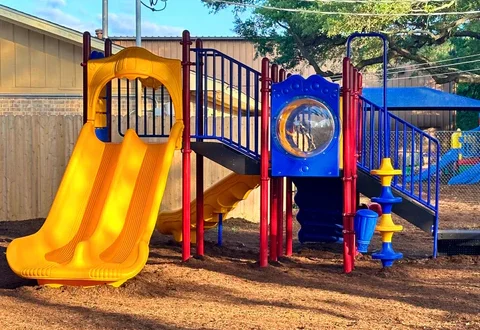Introduction: A Big Step for Little Feet
The first day of preschool or childcare is a significant milestone for a child, and also for parents. The first day of preschool or daycare marks the start of a child’s journey in the outside world. They will make new friends, develop new skills and gain a sense of independence.
This transition can bring anxiety and tears to both the child and the parent. The good news, however, is that with a thoughtful plan, you can make this transition smoother, more comfortable and even fun for your child.
1. Understanding the Emotional Effect
Children can feel overwhelmed by the thought of leaving familiar surroundings and faces. They may feel:
- Why are they being dropped off?
- Fear of new people, routines and situations
- They are sad about being separated from their caregiver or parent
- Social anxiety is a common problem.
Understanding your child’s emotional needs will help you prepare them for a successful start.
2. Prepare Early (At least 2-4 weeks in Advance).
Gradual preparation helps reduce anxiety. The time before the first day is crucial.
What you can do:
- Talk positively about school using simple and positive language
- Read books about preschool (e.g., Llama Llama Misses Mama, The Kissing Hand)
- Visit the daycare/preschool together in order to familiarize yourself with the space
- Display photos of teachers or caregivers
- Change the bedtime and wake-up routines according to your new schedule
The more familiar they are, the happier the child is.
3. Build Practical Skills before School Starts
Children in daycare or preschool are often expected to perform small tasks independently.
How to Help Your Child:
- Use the toilet or communicate your potty needs
- Hands should be washed
- Self-feeding with a fork or spoon
- Put on your shoes or jacket
- You can use basic words like “I am hungry”, “I need help”, or “I want play”.
Build confidence by practising these skills in your daily routines.
4. Create a Ritual of Goodbye
Saying goodbye can be the hardest part of the day. A short, sweet, and consistent ritual can help children feel more secure.
Here are some ideas to say goodbye:
- The phrase “Big bear hug, Little kiss, See you after this!”
- Hand signals or a wave from the window
- Keep a drawing or sticker from your child until pick-up.
Important: Never sneak away. If you leave without saying goodbye, it may cause your child to lose trust.
5. The Right Comfort Items to Pack
Familiar objects offer emotional support in the first few days.
Ideas:
- Soft toys, blankets, and family photos
- Small item (scarf, bracelet, or keychain).
- You can leave a note or doodle in your backpack.
Label all clothing and accessories with the name of your child.
6. Establishing Trust with Caregivers
If you show your children that you can trust their teacher, they will feel more secure.
Connect the dots:
- Introduce yourself to your child’s caregiver
- Warmly greet caregivers by name and warmly greet them.
- Do not show your worry or hesitation to your child
- Please share with your child their routines, calming techniques, and preferences
Children feel safer when there is consistency between the home and the care they receive.
7. What to expect and how to react during the first week
The first few days may be difficult. How to get through them
What’s Normal:
- Crying during drop-offs
- Clinginess in the home
- Regressions or emotional outbursts (bedwetting and tantrums).
What to do:
- Drop-offs can be stressful, so stay calm and confident.
- Keep your goodbyes brief and consistent
- Celebrate your small victories after school. You are so amazing!
- Open-ended questions can be used to ask about the day: “What did you like best?”
Let them unwind at their own pace.
8. How to Support Your Child After School
Your child may need comfort and connection after a day filled with new experiences.
Tips:
- Create a routine for calmness after school. (Snacks, quiet time, cuddles).
- Play without Structure
- Be patient when mood swings occur — they are adjusting as well
- Not just their behaviour but also their actions: “You are so brave!”
9. Even if there are tears, you can tell if the adjustment is going well.
Do not judge your success based on whether or not your child weeps at the drop-off. Look for these signs instead:
- They are active throughout the day
- They talk about their friends, teachers or songs
- The appetite and sleep of the child is normal
- They are excited about certain times of the day, such as playtime and stories.
Remember: Some kids take days; others, weeks. That’s okay.
10. When to Re-Evaluate
Anxiety or discomfort can sometimes be a sign of something more.
If you are experiencing any of the following:
- If your child continues to cry for more than two weeks, you may need to seek medical attention.
- Sleep, eating or behaviour suddenly changes
- Before and after school, they seem to be withdrawn or upset in an unusual way
- Your values are not aligned with the environment or caregiver
Your instincts are the best guide for you.
Conclusion: You can do it!
Starting preschool or daycare is a big step for both you and your child. With preparation, patience, and a positive attitude, you can transform fear into excitement and stress into growth.
This milestone is about more than learning the ABCs. It’s about developing independence, confidence, and adaptability.





